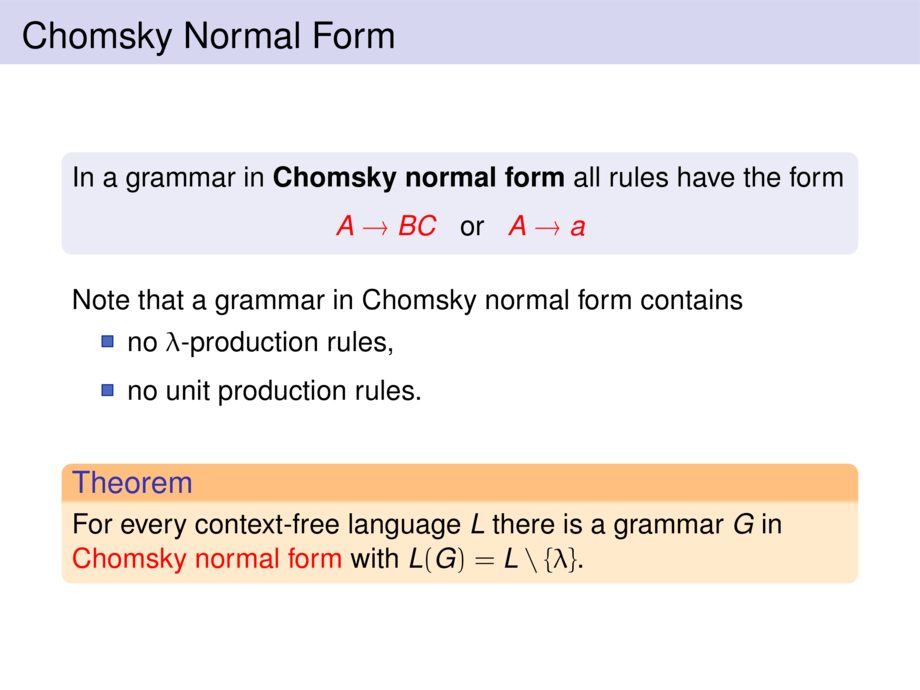



































































































64/77
\begin{frame}{Chomsky Normal Form}
\begin{block}{}
In a grammar in \emph{Chomsky normal form} all rules have the form
\begin{talign}
\alert{A \to BC} \;\; \mbox{ or } \;\; \alert{A \to a}
\end{talign}
\end{block}
\pause\medskip
Note that a grammar in Chomsky normal form contains
\begin{itemize}
\item no $\lambda$-production rules,
\item no unit production rules.
\end{itemize}
\pause\bigskip
\begin{goal}{Theorem}
For every context-free language $L$ there is a grammar $G$
in \alert{Chomsky normal form} with $L(G) = L \setminus \{\lambda\}$.
\end{goal}
\end{frame}

